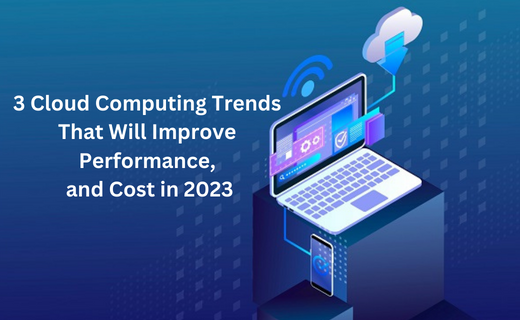-

3 Cloud Computing Trends That Will Improve Performance, and Cost in 2023
While using cloud infrastructure to build and deploy all workloads is likely to continue, there are also a series of emerging trends that will play increasingly important roles in 2023.
The following three cloud computing trends are not entirely new technologies, but they are approaches that will become increasingly foundational and significantly more widely deployed in 2023.
Cloud Optimization Takes Center Stage in 2023
What is it? Cloud optimization is about ensuring that workloads are running with the most efficient utilization of resources, both for performance and cost.
Why are people paying attention to it now? With the recession and inflationary fears top of mind in 2023, enterprises are tasked with reducing costs wherever possible. As enterprises have largely been moving to the cloud in recent years, there has been a realization that a generic cloud deployment isn't always the best option. This has led to the development of many cost-control approaches and more fine-tuned services to help optimize cloud workloads.
Who benefits from it? Cloud optimization benefits all enterprises that are faced with budget constraints and so are trying to do more with less.
"Organizations have, in some cases, woken up to exploding costs in the cloud, partly due to tech-led tunnel vision that moving to the cloud is a technical migration exercise," said Brian Otten, digital transformation catalyst at Axway. “Cloud optimization will move from a pure focus of eliminating cloud resource waste to determining the most efficient way to optimize and allocate cloud resources, especially across distributed hybrid or multi-cloud use cases."
Where can you get it? Cloud optimization capabilities come in many different forms. Microsoft, Google, and Amazon Web Services (AWS) offer cost and optimization dashboards to help organizations. Third-party services, including HPE GreenLake also provide cost management functionality. Beyond specific services, the discipline of FinOps provides guidance and best practices on cloud cost management.
Cloud Applications Move to the Edge
What is it? With the traditional approach to the cloud, services are centralized in public cloud provider regions. With edge computing, computing, and storage resources are moved closer to wherever an application is delivered. Edge delivery platforms, often based on JavaScript and increasingly adopting WebAssembly (WASM), enable rapid deployment and delivery at the network's edge.
Why are people paying attention to it now? It's more important than ever for organizations to provide users with the best possible experience. Speed and latency are key attributes that enable better experience, both of which are primary promises of edge application delivery platforms. The emergence of support for WASM now also makes edge applications even more attractive. It enables developers to write in multiple languages instead of building code in only one programming language.
Who benefits from it? Users benefit as they get applications faster. Developers benefit by deploying applications more rapidly to locations closest to their users.
Where can you get it? There are multiple vendor services for edge deployment networks. Among them are Cloudflare Workers, Fastly Compute@Edge, Vercel Edge Functions, Netlify Functions, and AWS Lambda@Edge.
Cloud Looks Beyond x86
What is it? Cloud vendors increasingly offer different instance types beyond those powered by Intel x86 CPUs. Cloud providers now have Arm-based silicon, custom machine-learning inference chips, and GPU offerings.
Why are people paying attention to it now? Better efficiency and cost are vital reasons users look at non-x86 cloud instances. In addition, for certain types of workloads, including artificial intelligence, x86 provides suboptimal performance, so organizations are turning to customized silicon.
Who benefits from it? Organizations that are not dependent on x86-based silicon and are looking for alternatives for better performance and lower cost.
According to a Forrester research report, Arm microchips have enabled cloud providers to create their chip development and supply chains, which allows them to offer lower-cost and more energy-efficient instance types. This helps the cloud providers manage operational costs while allowing customers to meet their sustainability goals.
Where can you get it? AWS offers its users several options, including its Graviton Arm-based chips; Microsoft provides users with access to Nvidia-based GPUs; and Google has Cloud Tensor Processing Units (TPUs) for optimized machine learning.
Follow us on LinkedInAbout the Author

Kamal Rastogi is a serial IT entrepreneur with 25 yrs plus experience. Currently his focus area is Data Science business, ERP Consulting, IT Staffing and Experttal.com (Fastest growing US based platform to hire verified / Risk Compliant Expert IT resources from talent rich countries like India, Romania, Philippines etc...directly). His firms service clients like KPMG, Deloitte, EnY, Samsung, Wipro, NCR Corporation etc in India and USA.